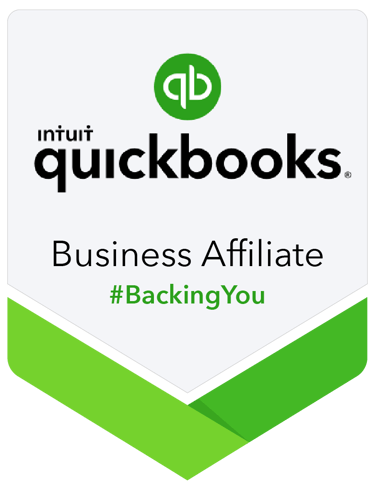Job Costing for Small Business: Track Costs Without Stress
Learn simple job costing methods to track project profits in real-time. Includes WIP reports, overhead allocation, and step-by-step tracking systems.
CONSTRUCTIONBOOKKEEPING
Jerry Blanco
7/21/20254 min read


Stop Guessing Whether Your Projects Are Actually Making Money – Here's Your Simple System
Picture this: You just finished a big project for a client. It felt like a lot of work, but you're not entirely sure if you made money or just broke even. Sound familiar?
If you're nodding your head, you're not alone. Most small business owners I meet are flying blind when it comes to tracking their actual project costs. They know what they charged, but they have no clue what it really cost them to deliver that work.
Today, we're going to fix that. I'm going to show you how to track job costs without needing an accounting degree or losing sleep over spreadsheets.
What Exactly Is Job Costing (And Why Should You Care)?
Think of job costing like a GPS for your business projects. Just like you wouldn't drive cross-country without knowing your route and fuel costs, you shouldn't take on projects without knowing what they'll actually cost you.
Job costing is simply tracking all the money that goes into completing a specific project or "job." This includes:
Direct costs: Materials, labor, and expenses you can tie directly to that project
Indirect costs (overhead): Your rent, utilities, insurance – the stuff that keeps your business running but isn't tied to one specific job
Here's why this matters: I've seen too many business owners work themselves to exhaustion on projects that barely broke even, or worse, actually lost money. Job costing prevents that nightmare.
The Real Difference Between Job Costing and Overhead
Let's clear up the confusion with a real example. Say you're a graphic designer working on a logo project:
Direct Job Costs:
15 hours of your time at $75/hour = $1,125
Stock photos purchased for this project = $50
Printing costs for presentation materials = $25
Total Direct Costs: $1,200
Overhead Costs (your monthly expenses divided by projects):
Office rent: $800/month
Software subscriptions: $200/month
Insurance: $150/month
Phone/internet: $100/month
Total Monthly Overhead: $1,250
If you typically complete 5 projects per month, each project should absorb about $250 of overhead ($1,250 ÷ 5).
So your true cost for that logo project? $1,200 (direct) + $250 (overhead) = $1,450.
If you only charged $1,300, you just worked for free – and actually lost $150.
Meet Your New Best Friend: The WIP Report
A Work-in-Progress (WIP) report sounds fancy, but it's just a running tally of what you've spent on active projects versus what you've billed.
Think of it like checking your bank balance, but for individual projects. Here's what a simple WIP report looks like:
Project Alpha
Budgeted Revenue: $2,500
Costs to Date: $1,200
Billed to Date: $1,000
Remaining Budget: $1,300
Status: On track ✓
Project Beta
Budgeted Revenue: $5,000
Costs to Date: $3,800
Billed to Date: $2,500
Remaining Budget: $1,200
Status: Over budget! ⚠️
This snapshot tells you immediately which projects are healthy and which ones need attention.
Your Step-by-Step Job Costing System
Step 1: Set Up Project Tracking (15 minutes)
Whether you use QuickBooks, Excel, or even a simple notebook, create a section for each active project. Write down:
Project name and client
Total quoted price
Start and expected end date
Step 2: Track Time Daily (2 minutes per day)
This is non-negotiable. Every day, record:
Hours worked on each project
Your hourly rate (be honest about what your time is worth)
Pro tip: Use your phone's timer. Start it when you begin work on a project, stop when you switch tasks.
Step 3: Record Direct Expenses Weekly (5 minutes)
Every Friday, gather receipts and record:
Materials purchased for specific projects
Travel expenses
Subcontractor payments
Any other costs you can tie directly to a project
Step 4: Calculate Overhead Monthly (10 minutes)
Once a month, total up your fixed business expenses and divide by the number of projects you typically complete. This gives you your overhead cost per project.
Step 5: Review Your WIP Report Weekly (10 minutes)
Every Monday morning, update your WIP report. Ask yourself:
Which projects are on track?
Which ones are going over budget?
What can I do this week to get back on track?
Real-Time Tracking: Your Profit Protection System
Here's the game-changer: checking your project profitability in real-time, not after it's too late.
The 50% Rule: When you've completed about 50% of a project, you should have spent roughly 50% of your budgeted costs. If you've spent 70% of your budget but only completed 50% of the work, it's time to have a conversation with your client about scope changes.
Weekly Check-ins: Every week, ask yourself:
Am I spending more time on this than expected?
Are there additional expenses I didn't anticipate?
Do I need to adjust the scope or timeline?
Common Job Costing Mistakes (And How to Avoid Them)
Mistake #1: Forgetting to track your own time
Fix: Set phone reminders or use time-tracking apps like Toggl or Clockify.
Mistake #2: Not including overhead in your calculations
Fix: Always add your overhead percentage to direct costs.
Mistake #3: Waiting until the end to see if you made money
Fix: Check your numbers weekly, not monthly.
Mistake #4: Not tracking small expenses
Fix: Those $5 coffee meetings and $15 parking fees add up. Track everything.
Making Job Costing Work for Your Business Size
Solo Entrepreneurs: Keep it simple with a basic spreadsheet or use QuickBooks Simple Start. Focus on tracking time and major expenses.
Small Teams (2-5 people): Implement a shared system where everyone logs their time. Consider upgrading to QuickBooks Plus for better project tracking.
Growing Startups (5-10 employees): You need more robust systems. Look into project management tools that integrate with your accounting software.
Your Next Steps: Taking Action Today
This Week: Set up a basic tracking system for your current projects
This Month: Implement weekly WIP report reviews
Next Quarter: Analyze which types of projects are most profitable and focus on getting more of those
Remember, the goal isn't perfection – it's awareness. Even rough job costing is infinitely better than no job costing.
The Bottom Line
Job costing isn't about creating more paperwork for yourself. It's about making sure your hard work actually pays off. When you know your true costs, you can price confidently, negotiate better, and focus on the projects that actually make you money.
You didn't start your business to work for free. With good job costing, you won't have to.


